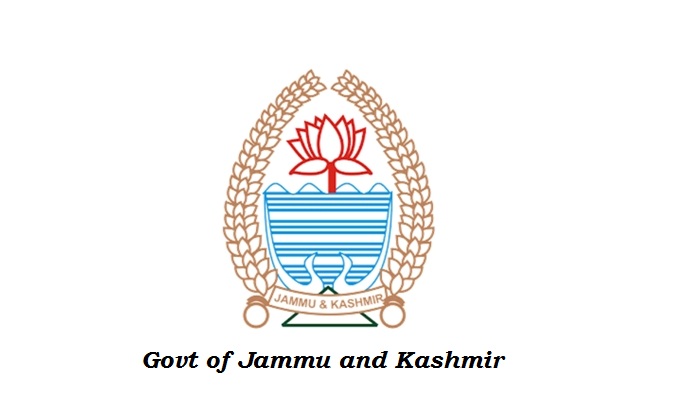Marking a significant stride towards unraveling the geological mysteries embedded in the Union Territory of Jammu and Kashmir (J&K), Department of Geology & Mining has unveiled its avant-garde Geo-Science Museum that houses the rich geological heritage of the region.
The museum is located at Ompora Budgam and accommodates more than 100 collections of rocks, minerals, and fossils; it is a narrative of the Earth’s ancient tales in the Valley. Many consider it as a living archive that will not only educate the present generation but also stand as a heritage for the generations to come.
Senior Geologist Dr. Ghulamudin told Rising Kashmir that it is the first kind of place, where all types of minerals, rocks, and other fossils have been displayed, including precious and semi-precious specimens.
“Unlike its predecessors, this museum transcends a mere collection, embracing the vast realm of geology in its entirety,” he said.
Dr. Ghulamudin said that the museum accommodates over 150 meticulously curated samples, including rocks, minerals, industrial minerals, and fossils, the museum presents a comprehensive and visually stunning panorama of the region’s geological evolution.
He said that there are three chambers within the museum that serve as portals into distinct geological dimensions. The first chamber, a kaleidoscope of colors and textures, houses mineral and rock samples.
Similarly, the second chamber is a journey through time, displaying a captivating array of fossil samples and the third chamber, accommodates industrial minerals, he said.
Dr. Ghulamudin says that the museum showcases the diverse Geo-environmental history of J&K UT besides serving as a valuable resource centre for Geo-scientific research and educational purposes.
The Geo-Science Museum has garnered attention from esteemed Geoscientists across various organizations like the Geological Survey of India (GSI) and the Oil and Natural Gas Corporation (ONGC). The museum also features maps displaying activities at district headquarters, blocks, and other geologically significant information.
Over the past few months the museum has become a focal point for education, research, and appreciation of geological history. The museum marks a significant milestone in preserving and promoting the geological heritage of J&K UT.
Regular visits from these experts, along with other dignitaries underscore the museum’s role as a beacon for geoscientific research and education. The museum’s collection, a result of painstaking efforts by dedicated geologists during numerous field expeditions, spans the entire stratigraphic succession of J&K UT.
The officials said it has been opened to students and researchers twice a week, the Geo-Science Museum has swiftly become an educational oasis, welcoming over 200 students from different higher secondary schools.
“These eager minds delve into the rich geo-environmental history of J&K UT, gaining insights that textbooks can only attempt to convey,” he said.
Earlier on October 2nd, the Chief Secretary of J&K UT inaugurated this museum in presence of the Administrative Secretary Mining at Ompora Budgam. This symbolic event marked the beginning of a new chapter in the preservation and celebration of J&K UT’s geological heritage. The Museum has a diverse array of minerals collected from various locations of Kashmir.
Etherpectin Sp takes center stage in the museum’s mineral collection, originating from Kulgam. This unique mineral adds a touch of intrigue to the exhibits, captivating visitors with its distinct properties and origin within the region.
“Sandy Shale from Pattan Baramulla provides a window into the past. Its presence in the museum allows us to connect with the geological evolution of this area in a tangible and meaningful way.
Lead Zinc Ore from Trikangan Baramulla is a valuable addition to the museum’s collection, highlighting the geological resources that have played a role in the economic development of our region,” notes an industry expert.
The Purple Conglomerate is a standout exhibit, representing the geological beauty that Tosamaidan Budgam upholds. It’s a reminder of the kaleidoscope of colors hidden beneath the Earth’s surface,” stated a visitor to the museum.
Originating from Khanmoh, Novaculite is a fine-grained, siliceous rock that finds its place among the museum’s exhibits. This unique mineral is a testament to the geological intricacies waiting to be discovered within J&K UT.
“The Bone Bed from Pampore is a treasure trove of ancient life. It’s like stepping back in time and witnessing the geological history unfold before our eyes,” said a school student on a museum tour.
“Nummulites from Reasi offer a window into the marine history of our region. The museum’s dedication to showcasing such intricate details is commendable,” noted a marine biologist visiting the museum.
“Gypsum from Baramulla and Ramban showcases the geological variations within our territory. It’s a reminder of the fascinating geological processes that have shaped our landscape,” a visitor said.
Calcite from Pulwama is a versatile mineral, and its inclusion in the museum reflects the geological contributions that support our local industries and infrastructure,” an industrial engineer studying the exhibits, revealed.
Bentonite Clay from Samba is a crucial industrial mineral, and its presence in the museum showcases the utilitarian aspects of the region’s geological wealth,” observes a representative from the local mining industry.
The museum’s collection is enriched with Hematite from Anantnag, a mineral renowned for its metallic luster and significance in various industries. This exhibit highlights the mineral’s role in the economic development of the region.

